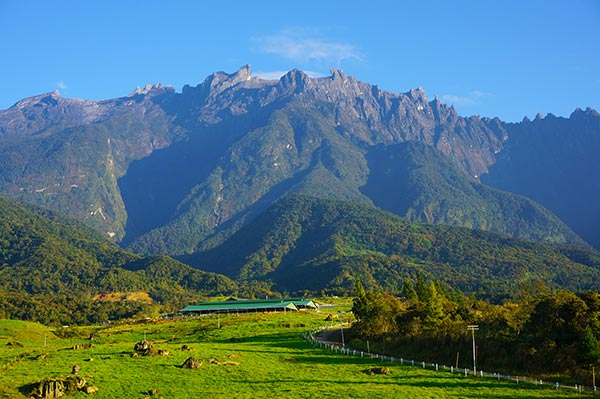
MOUNT KINABALU
The majestic Mount Kinabalu is one of the highest mountains in South East Asia standing at 4095.2 metres. Climbers from around the world start their ascend from Timpohon Gate at the Kinabalu National Park. Apart from traditional mountain climbing, visitors can also experience Via Ferrata with Mountain Torq. This is the world’s highest and Asia’s first Via Ferrata or ‘iron road’ at 3,200m to 3,800m above sea level. To those who are more adventurous, there are other mountain activities such as Alpine Rock Climbing, Paragliding and also mountain expedition.
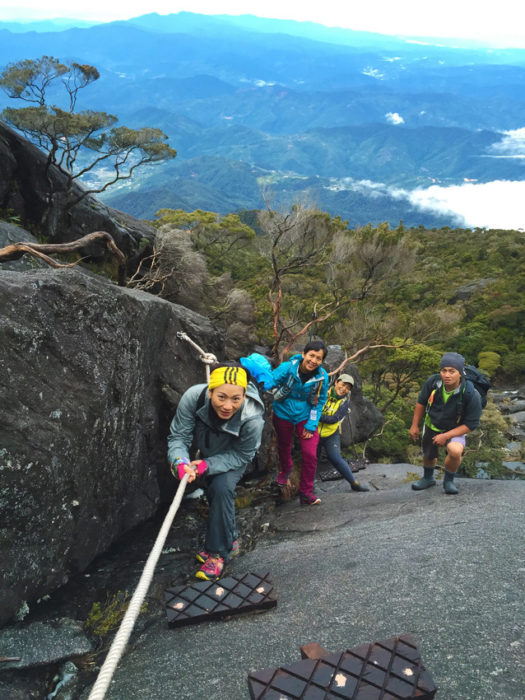
-
TRAILS
Now there are 2 trails to the summit, Ranau Trail and Kota Belud trail. The trails will take climbers from Panar Laban (previously known as Laban Rata) at 3,272m to Sayat Sayat (3,668m). And then continue on to the summit trail to Low’s Peak at 4,095.2m. (Note: Both Kota Belud trail and Ranau are new routes to Sayat Sayat, the route from Sayat Sayat to summit is the same route used previously). The new trails may be more challenging than the previous trail, but climbers will be rewarded with breathtaking views along the way.
-
TEMPERATURE
The temperature of Mount Kinabalu usually stands from −4 to 8 °C (25 to 46 °F) from December to January, and 3 to 12 °C (37 to 54 °F) from June to September. Due to the coldness of the mountain from December to January, sometimes, frost and ice appear at the summit of Mount Kinabalu.Snow has been found on the topmost peak of the mountain, and it is estimated that it snows on the mountain once every year according to studies.
-
WHAT ELSE TO DO
Surrounding the Kinabalu Park is a multitude of natural attractions and enjoyable activities such as mountain biking, golf, birding, farm tours, canopy walk and of course photography!.A variety of accommodation is available within the Park and in its surrounding areas, ranging from basic hostels to luxury chalets.
-
Essentials
A good vacation is never without some must-have essentials. As Kinabalu Park is located in a hilly area, it is best to pack up warm clothing and gloves to ward off the cold. Also, don’t forget to bring a highly water resistant knapsack and a raincoat in case it rains. The rough terrains of Mount Kinabalu require its ambitious to-be conquerors to have comfortable walking/ tracking shoes with them. Last but not least, be well prepared with energy snacks e.g. chocolate, nuts, glucose sweets and a water bottle for fuel and hydration. As a safety recommendation, bring along a torch light in case one gets lost at night.
-
Important notice
Mt. Kinabalu is a popular destination, visitors who wish to climb Mount Kinabalu are advised to make reservations 6 months in advance to avoid dissappointment. The number of climbers is limited to 135pax daily.
-
climbing permit reservation at:
Sabah Park
Sabah Parks Main Headquarters
Lot 45 & 46, Level 1-5, Blok H, Signature Office
KK Times Square, Coastal Highway,
88100 Kota Kinabalu
Tel Office : 088-523500
VISIT WEBSITE
ONLINE BOOKING
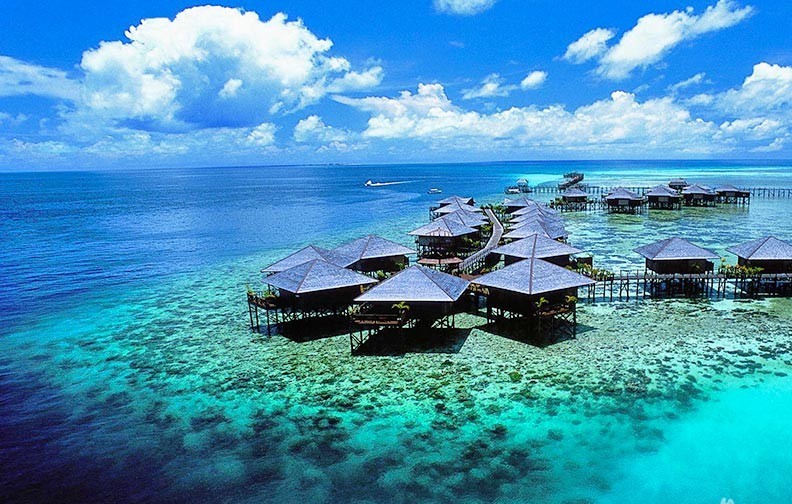
MABUL ISLAND
Mabul is also renowned for its amazing array of macrolife, making it an underwater photographer’s dream location to capture some of the rarest ecological species on film. Flamboyant cuttlefish, blue-ringed octopus, spike-fin gobies, frogfish and moray eels are just some of the spectacular critters you will encounter beneath the waters of Mabul. The island is a small oval shaped island fringed by sandy beaches and perched on the northwest corner of a larger 200-hectare reef. The reef is on the edge of the continental shelf and the seabed surrounding the reef slopes out to 25–30m deep. In addition, Mabul is also a local island-village. Accommodation ranges from backpacker styled lodges to water bungalows. Although all the excitement is underwater, you can always set your scuba gear aside for a day to laze on Mabul’s soft sand to work on your tan. It is about a 45 minute boat ride from the Semporna town jetty. Within a short distance and prominently visible from the island is the Seaventures Dive Rig. The rig was previously used in the oil and gas industry and was decommissioned in 1985 and stationed in Singapore. It was move to Mabul in 1997 and besides housing travelers, the six legs of the rig shelters marine life.
-
Things to do
Since water is a way of life on the island, popular lagoon excursions include snorkeling, diving, cruising, fishing, visiting the Bajau Laut settlements in Tun Sakaran Marine Park, and of course, turtle nesting and hatching.
-
DIVING MABUL
Mabul's reef is on the edge of the continental shelf and the seabed surrounding the reef slopes out to a depth of 25 to 30 m. There are several dive resorts operating on Mabul island. Mabul is arguably one of the richest single destinations for exotic small marine life anywhere in the world.[citation needed] Flamboyant cuttlefish, blue-ringed octopus, mimic octopus and bobtail squids are just a few of the numerous types of cephalopods to be found on Mabul's reef. Many types of gobies can be found including the spike-fin goby, black sail-fin goby and metallic shrimp goby. Frogfish are everywhere; giant, painted and clown frogfish are regularly seen along with most of the scorpion fish family. There are six resorts here providing accommodation for scuba divers—most located on the island or on stilts over the water, while one is on a converted oil platform about 500 metres from the beach. There are also several homestay & backpacker accommodations which can arrange diving. All of the resorts/homestays can arrange a day trip to the nearby island of Pulau Sipadan. There is a permit system for Sipadan and all permits may be booked months in advance.
VISIT WEBSITE
BOOK MABUL WATER BUNGALOWS
REVIEWS
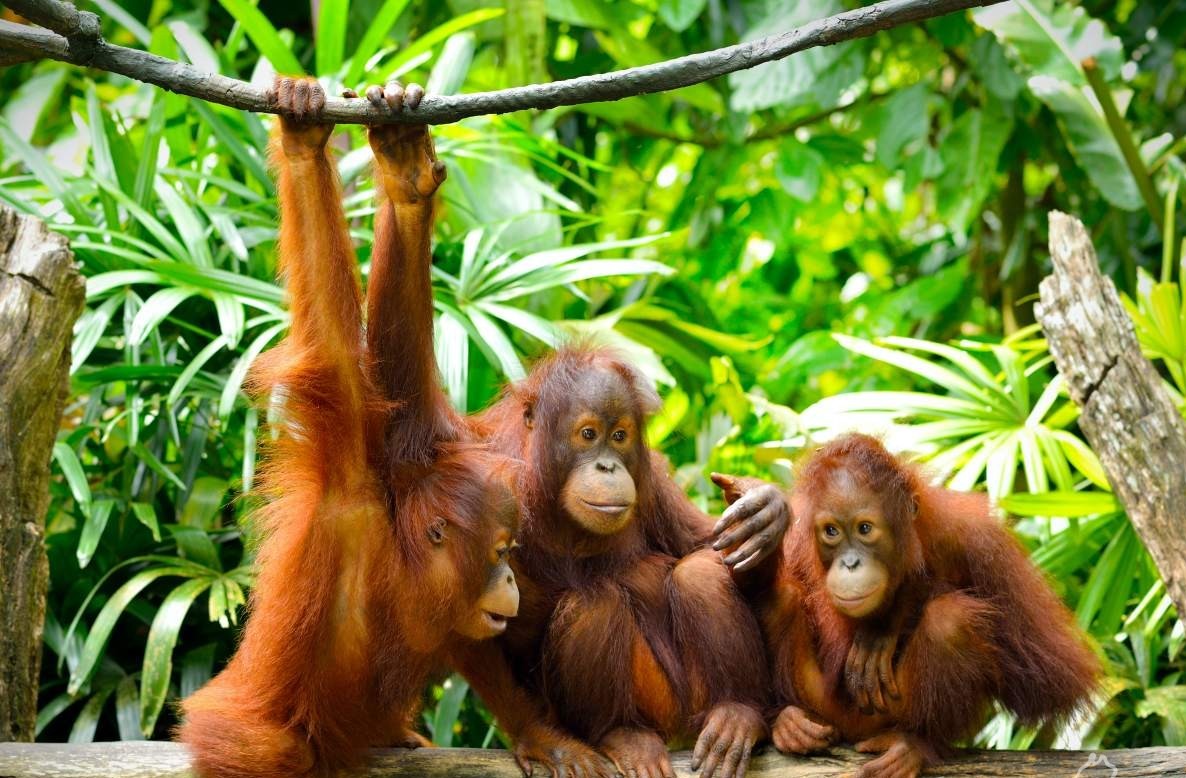
S.O.REHAB. CENTRE
The centre opened in 1964 as the first official orangutan rehabilitation project for rescued orphaned baby orangutans from logging sites, plantations, illegal hunting or kept as pets. The orphaned orangutans are trained to survive again in the wild and are released as soon as they are ready. The centre has however attracted criticism for its tourism activities and rehabilitation efficacy.The sanctuary is located within the Kabili-Sepilok Forest Reserve which covers an area of 4,294 ha (10,610 acres), much of which is virgin rainforest.Today around 60 to 80 orangutans are living free in the reserve.It has become one of Sabah's tourist attractions.
In October 2014 the centre opened a new section where visitors can view the nursery area where the younger Orangutans first learn to be outside and play on a large climbing frame. This consists of 2 large indoor seating areas (one with air conditioning and one with fans only) with a large window that overlooks the play area. There is no additional charge to enter this part of the centre.
The Orangutan Rehabilitation Centre is neighboured to the Bornean Sun Bear Conservation Centre and shares veterinary facilities, personnel, parking, access roads and ticket gates.
-
Entry Costs (Malaysian/ Non-Malaysian nationals):
Adult- RM5/ RM30
Child- RM2/ RM15
Ticket is valid for the day of purchase, so you can attend both feeding times on the same ticket.
Camera Cost: RM10 -
Opening hours:
Saturday to Thursday- 9am to 12pm and 2pm to 4pm. Fridays 9am-11am and 2pm to 4pm.
-
Orangutan feeding times
10am and 3pm. It is recommended to arrive 30 minutes before feeding time.
-
Facilities:
Souvenir shop, information center showing a video 6 times a day, cafe and toilets.
-
Getting there:
Many organised tours leave from around Sabah at varying prices. Public bus #14 departs from Sandakan taking approximately 45–60 minutes, costing RM5. The Kota Kinabalu to Sandakan bus can also drop you at junction Jalan Sepilok, around 2.5 km from the center. Journey approximately 6 hours from KK. Taxis are usually available outside the centre (RM40 to Sandakan).
ADDRESS:
Sabah Wildlife Department, W.D.T. 200, Sandakan, Jalan Sepilok, Sepilok, 90000 Sandakan, Sabah, Malaysia
VISIT WEBSITE
BOOK ONLINE TICKET
REVIEWS
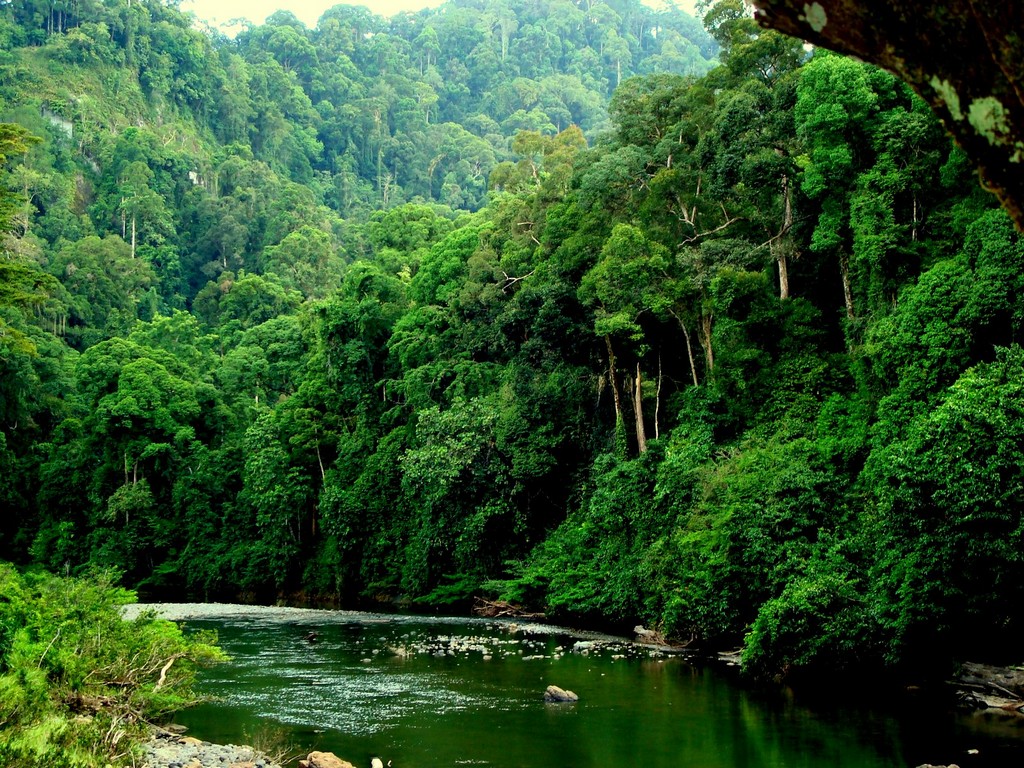
D.V.AREA
About 80km from Lahad Datu city is the Danum Valley Conservation Area, considered as one of the world’s most complex ecosystem and classified at Class 1 (Protection) Forest Reserve under the Sabah Forestry Enactment 1968. The enchanted forest serves as a natural home for the unimaginable number of plants and wildlife species such as banteng, clouded leopard, orang utan, slow loris, proboscis monkey including the endangered Bornean pygmy elephant.
The Danum Valley Field Centre (DVFC) is among the top tropical biodiversity research centre in the world. DVFC is a testament for the long-standing partnership established since 1984, between The Royal Society of United Kingdom’s South East Asia Rainforest Research Programme (SEARRP) and Danum Valley Management Committee. Previously reserve for researchers only, the facilities are now extended to visitors looking for a basic stay while exploring Danum Valley.
-
THINGS TO DO
Guided trails, bird watching and night drive are among the activities offered to visitors seeking to experience the wonders of this area. Visitors have recorded so many incredible sightings just by being around the area and lodges. Among the famous previous visitors include the Duke and Duchess of Cambridge Prince William and his wife Catherine Middleton, Sir David Attenborough, Dame Judi Dench and Martha Stewart.
Visitors also get the chance to visit an ancient Kadazandusun burial site, complete with belian coffins and ceramic spirit jars. Three burial sites have been discovered in Danum Valley—two near the field centre and one below the cliff, overlooking Borneo Rainforest Lodge. -
ACCOMODATION
Meanwhile, the Borneo Rainforest Lodge that sets along the flowing Danum River is a multiple award-winning eco-lodge with international standards. Their premium villas and chalets offer visitors from all ages an extraordinary experience and comfort being well-rested in the middle of the jungle with a touch of luxury. Among the attractions offers is the chance to experience the lodge’s canopy walkway with its viewing platforms that offer views from 27m above the forest floor.
Also within the vicinity is the Kawag Nature Lodge. The accommodation is located in the buffer zone II of Danum Valley Conservation Area, and offers a similar chance to jungle trek, wildlife sighting, bird watching, river exploration, river tubing and more. -
NOTICE
Visits to Danum Valley must be pre-arranged in order to obtain permits and secure transportation. Tour packages range from 3 days 2 nights up to 5 days 4 nights and can be easily coordinated directly with the product owners or with tour operators that are selling these packages.
-
For bookings and enquiries contact:
Sabah Holidays (Danum Valley Field Centre)
Inno Travel and Tour Services Sdn Bhd
Level 13, Tun Mustapha Tower, Yayasan Sabah, Likas Bay 88400 Kota Kinabalu, Sabah, Malaysia.
Tel: +6088 326 320, +6088 212 828, +6088 212844
Email: inno@sabahholidays.com
Sabah holidays Website
Borneo Refugia Adventure Sdn Bhd (Kawag Nature Lodge & Danum Valley Field Centre)
Wholly-owned company of YAYASAN SABAH
Block 3, Ground Floor, MDLD 3287, Fajar Centre, Segama Road, 91112 Lahad Datu, Sabah, Malaysia
Tel: +6 088 267367 / Mobile: +6 014 3414884
Email: info@borneorefugia.com
Borneo Refugia Website
ADDRESS:
Lahad Datu, Sabah, Malaysia
VISIT WEBSITE
REVIEWS
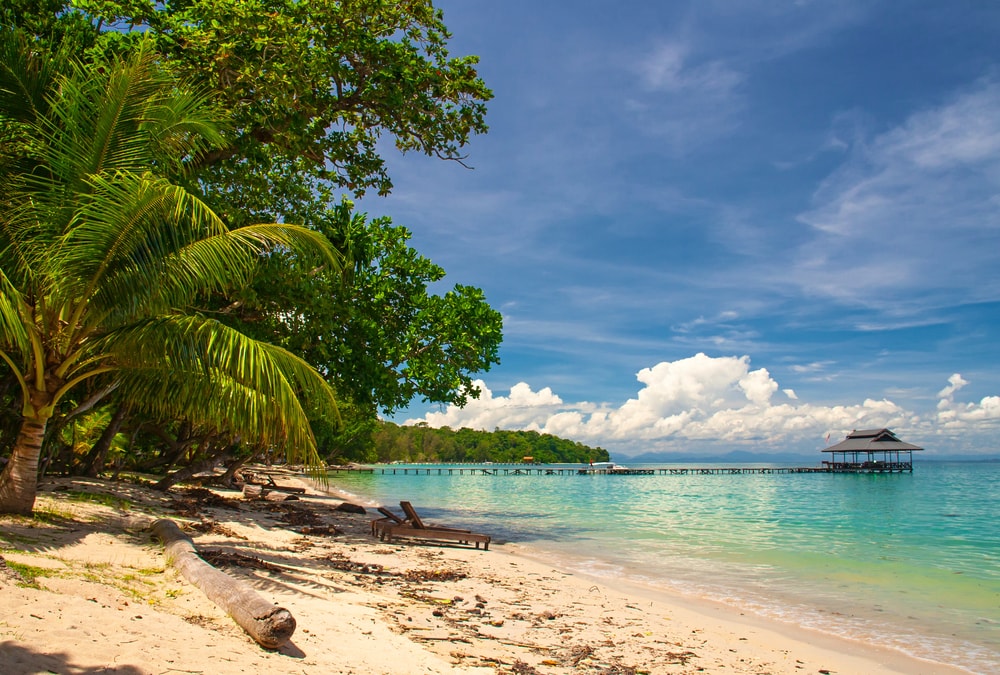
PULAU TIGA
Pulau Tiga, literally means 'three islands' in Malay, is surrounded by the pristine South China Sea. Although Pulau Tiga no longer dabbles in show business, its name is no stranger to travellers from all walks of life who enjoy a weekend getaway in the isolated bliss Pulau Tiga has to offer. Picturesque sceneries of the vast ocean, white sandy beaches to sink your toes in, and a therapeutic soak in the mud pools will be a sure way to ease away tension and churn out a couple of laughs within your party. If you are seeking adventure, you can also opt for a short hike in the jungle, visit the nearby snake island for some wildlife sightings or camp in the wildness!
-
ACCOMODATION
With two resorts on the island, it’ll be a shame to not spend at least one night in either Pulau Tiga Resort or Borneo Eagle Resort to relish the natural facilities available at your disposal to fulfil a tropical island getaway such as swimming, snorkelling or kayaking. Divers can also fill up their dive logs as Borneo’s underwater treasure troves offers much for the senses among aquatic wildlife.
-
GETTING THERE
Located in the district of Kuala Penyu, West Coast of Sabah, the drive itself takes about 2 hours to reach the jetty of Pulau Tiga, 103 km from Kota Kinabau city. The boat transfer to the Pulau Tiga Island takes another 40 minutes as the island is located 16 km from the jetty.
VISIT WEBSITE
BOOK PULAU TIGA RESORT
FACEBOOK PAGE
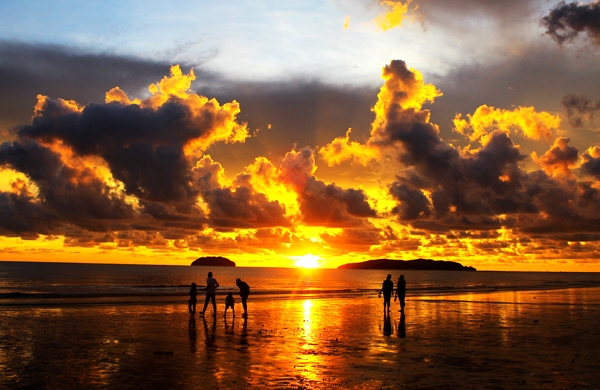
TANJUNG ARU
The Tanjung Aru Beach is spread on the west coast of Kota Kinabalu in Sabah, Malaysia. It is located close to the Kota Kinabalu International Airport. With a 1.3 mile stretch of the silky golden beach glistening under the sun, this beach has been successful in capturing the heart of its every visitor. People visit this beach to sight the most iconic sunsets and posing for sunset selfies. The tranquil aura of this place helps one relax in the most beautiful setting of nature here.
-
SUBDIVISION
The Tanjung Aru Beach is subdivided into four areas namely First beach, Prince Philip Park, Second Beach and the Third beach. One can see the beach originating in the northernmost point from the entry here and then turning in the southward direction. The whole area is renowned as the First Beach. This place is an abode to the best beach sports activities, hawker stalls serving lip-smacking Malaysian food and exquisite hotels. The first beach resides almost everything that a visitor seeks in a vacation and hence it is the most popular spot of the Tanjung Aru beach.
-
How to Reach Tanjung Aru Beach
There are many options one can choose from to reach this gorgeous beach. With a short distance of four miles south of Kota Kinabalu, one can reach the location in 15 to 20 minutes. Select from the below mentioned option as per your prefered mode of transportation.
- By Car/Taxi:
One can hire a taxi that will lead you directly to the beach. The fare for the taxi can cost up to MYR 15 but you can save yourself from the hustle of public transport. Check for the meter as your ride starts.
- By Bus:
Public transports like buses and mini buses leave regularly from wawasan plaza and city plaza to the Tanjung Aru Beach. The one-way ride to the beach costs 30 US cents or MYR 1.50. -
Best Time to Visit Tanjung Aru Beach
The apt time to visit this gorgeous beach is from December to April. These months are the peak season and the weather is also in its best state. Even the water sports activities like deep-sea fishing and white river rafting are available during the winter months. Apart from witnessing the breath-taking views of the sunsets, one can also explore nature parks near the beach in the soothing weather.
If one wants to plan their visit in a time when they can avoid the flock of tourists, autumn months are also a good option. The months of September to November are an off tourist season and cheap accommodations can also be found during this time. One can even face light showers of rain during these months.
Summer months are also open to visitors but the cache lies in the sudden worsening of weather conditions here. Almost no tourists can be seen visiting the beach in May due to the scorching heat. Heavy rainfall can hinder the experience of exploring the pristine location.
This destination attracts tons of tourists during December due to the optimum range of temperatures. Apart from this, November and June have also seen crowds at the beach. During this time the price hikes for everything starting from accommodations at the hotels to the flight fares. -
VISITING HOUR
The Tanjung Aru Beach is open from 11 AM to 11 PM on all days of the year.
Tanjung Aru, 88100 Kota Kinabalu, Sabah, Malaysia
VISIT WEBSITE
REVIEWS
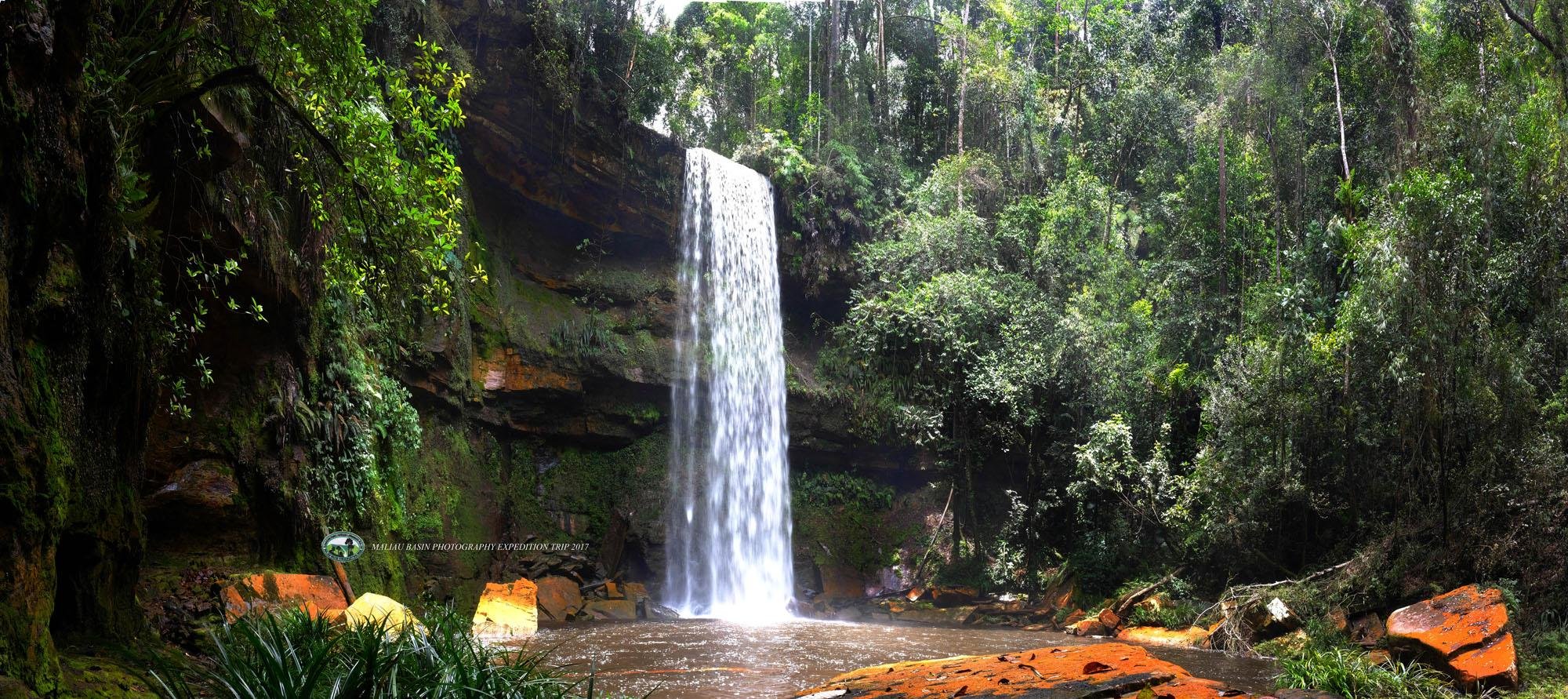
MALIAU BASIN
Nature explorers will simply love the Maliau Basin as it is an excellent site for jungle trekking and bird watching. It contains an unusual assemblage of 12 forest types, comprising mainly of lower montane forest dominated by majestic Agathis trees, rare montane heath forest and lowland, and hill dipterocarp forest. The highlight of the adventure is to trek the majestic 7 tiers Maliau Falls.The diverse ecosystem makes an excellent jungle experience. At night, visitors may also take a night drive for wildlife spotting. Water babies can also take a dip in the beautiful waterfall.
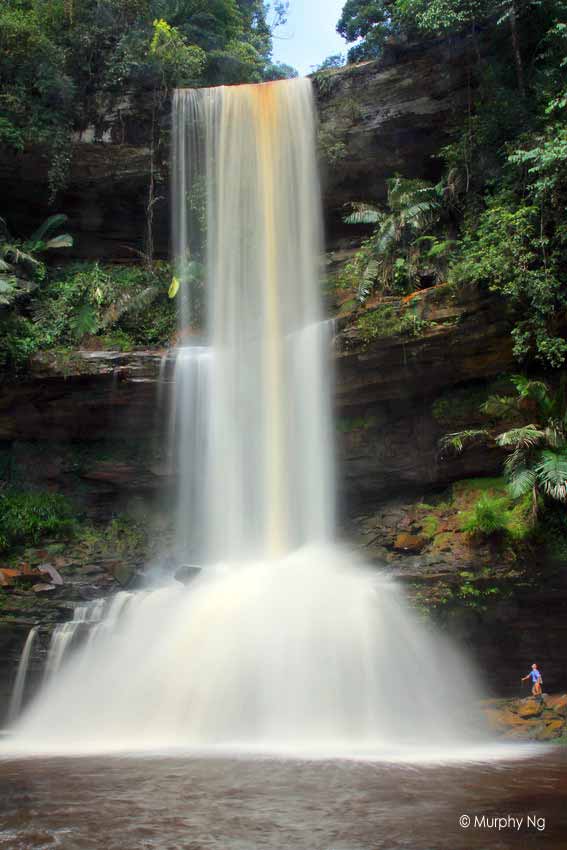
-
GETTING THERE
The nearest major towns with airports are Kota Kinabalu or Tawau. Driving from these locations will take around 6 and 4 hours respectively with road conditions being poor in sections. If you are leaving from Kota Kinabalu you will first make your way to the rural town of Keningau before continuing to the Maliau Basin Study Centre. Unfortunately there is not quick way to get to Maliau Basin by road, however venturing this far into Borneo’s interior will really make you feel like you are stepping off the map.
-
ACCOMODATION
Maliau Basin Study Centre
Agathis Camp
Ginseng Camp
Nepenthes Camp (Formerly Camel Trophy Camp)
know more by clicking the travel link given below -
NOTICE
Keen visitors must, however, obtain permission to enter the Maliau Basin in advance from Yayasan Sabah. Also bear in mind that Maliau Basin is in a remote, atavistic and isolated area with limited access, communications and safety facilities.
-
PRE-ARRANGEMENT
Pre-arrangement with local tour operator is advised. The Maliau Basin expedition tour is usually packaged for 4 days 3 nights or 5 days 4 nights with physical requirement range from medium to strenuous.
-
Further Contact
Borneo Nature Tours Sdn Bhd
Block B, Lot 11 & 12, 3rd Floor KK Times Square, Off Coastal Highway, 88100 Kota Kinabalu,Sabah, Malaysia
phone: +60 88 267 637
e-mail: info@borneonaturetours.com
Borneo Nature Tours Sdn Bhd website
VISIT WEBSITE
CLICK HERE AND PLAN YOUR TRAVEL
REVIEWS
FACEBOOK PAGE

BOHEY DULANG
The beauty of Sabah’s islands is legendary. But while diving hotspots like Sipadan are having their moment, the archipelago has many other lesser-known islands such as the stunning Bohey Dulang
The glittering archipelago of Semporna is home to pristine, palm-lined islands – one of which is Bohey Dulang. Formed by the remnants of an ancient volcano, this mountainous landmass is the second-largest in Tun Sakaran Marine Park. Though an overnight stay on the island isn’t possible, it’s a popular day trip for birdwatching enthusiasts, trekkers and divers. But what truly sets it apart from other Bornean islands is the majestic view of archipelago from its highest peak – that view alone draws tourists year-round.
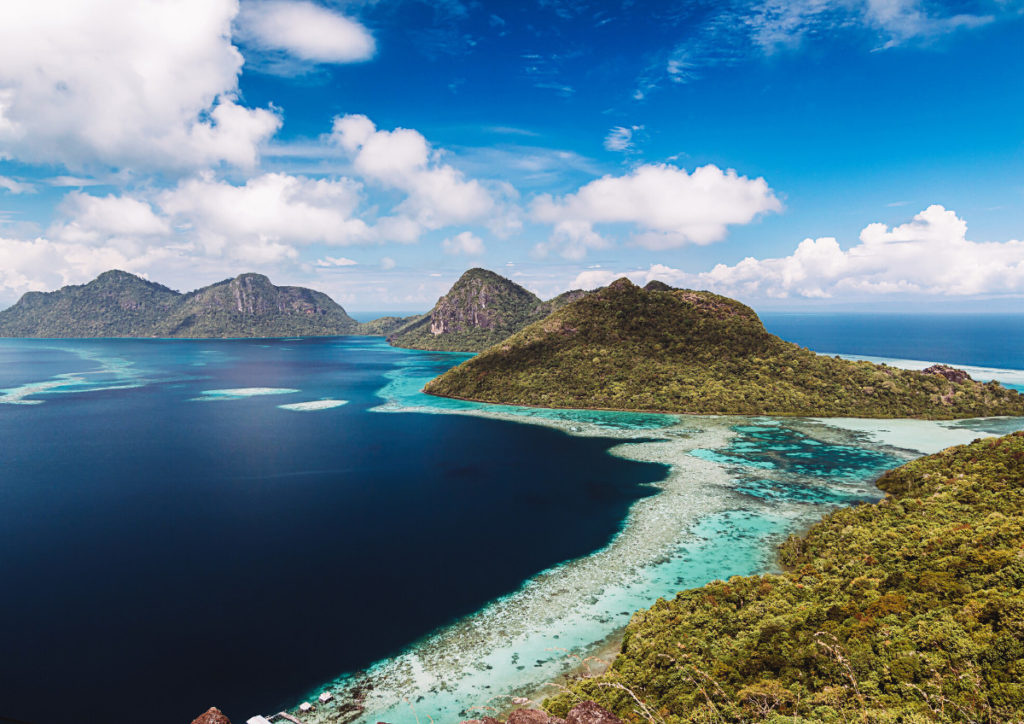
-
Everything you need to know about Bohey Dulang
It’s the second-largest island in the Tun Sakaran Marine Park.
It’s a paradise for bird lovers.
Bohey Dulang viewpoint has arguably the best view of the archipelago.
An extinct volcanic crater now forms the island’s beautiful lagoon.
It’s possible to explore the entire island on foot.
Spend the night in a water villa on neighbouring islands.
Nearby hotels list -
Things to do
Hiking
Also well worth a visit is the Tun Sakaran Marine Research Unit’s Giant Clam and Marine Invertebrate Hatchery, where rare giant clams are bred.
Birdwatching
The island is known for its population of Sea Gypsies, who’re some of the most photographed around the marine park. -
GETTING THERE
To get there, take a flight to Tawau and make your way to the fishing settlement of Semporna. Bohey Dulang is only a 35-minute speedboat ride away. Hire a private boat tour that gives you the flexibility to explore the island on your terms or opt for the island-hopping tours around the park that depart from the jetty each morning.
VISIT WEBSITE
ONLINE BOOKING
REVIEWS
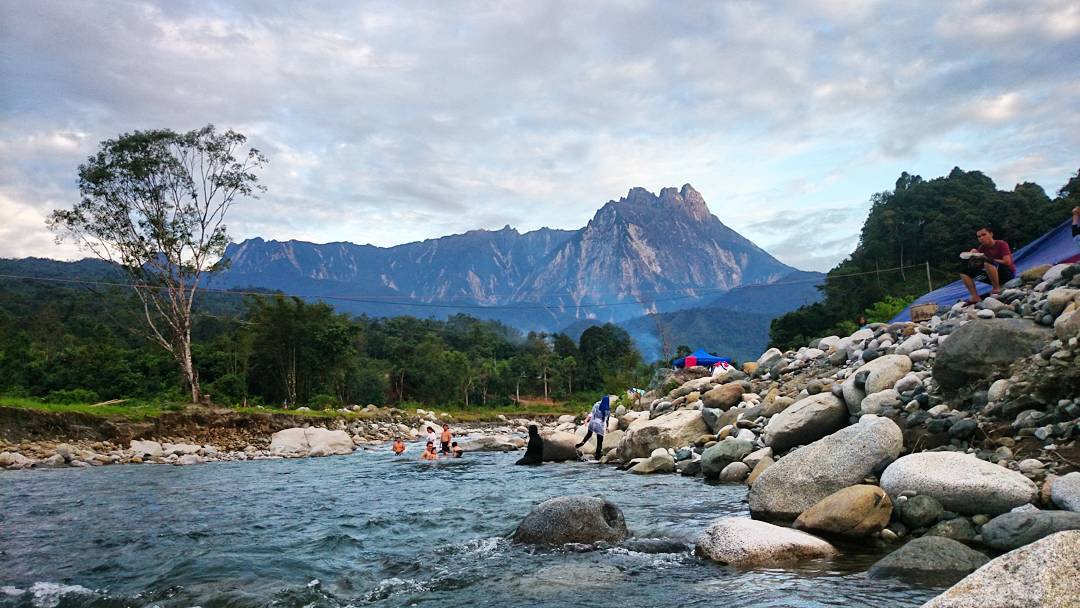
POLUMPUNG
Polumpung Melangkap View Camp Site in Kota Belud, Sabah, is the best place to chill out, enjoy nature and of course, take pictures, among others.The camp site is fairly new – it was “formed” as a direct result of the devastating Sabah earthquake in 2015 (and subsequent floods a few months later), when geographical changes took place in the village. The villagers then took the opportunity to promote Kampung Melangkap as a rural tourist attraction, offering activities like camping and river rafting. Polumpung is just one of a handful of camp sites you can visit at the village, but it is also the most accessible and affordable. It also offers the best view of the mountain. The river that runs through the village is clean and its water is always cool, even on hot sunny days. This is because the water comes straight from the mountain. If the river’s current gets a little too strong for you, just head to the man-made pool for a quick dip. At night, enjoy the view of a million twinkling stars in the dark sky. Yes, it will be really dark so do bring along a torchlight or two.
-
CAMPING OPTIONS
The site has a few camping options: You can bring your own tent (just ask any of the attendants if you need help setting it up) or rent from the front office; you can stay at their permanent A-camp structures or tents; or you can sleep in their multi-purpose hall. You would need to bring your own sleeping bags but if you don’t have any, you can rent from them too, though they are in limited supply.
You can also cook at the premises – there is a kitchen that you can use – or rent one of their barbecue pits for the day/night. Otherwise, just order some food from their cafeteria.
Toilets, showers and changing rooms are also available, but do bring your own toiletries and towels.
Polumpung Melangkap has various facilities such as a grocery store, prayer rooms, washrooms, changing rooms and showers. -
TIPS
The place is great for groups or friends and families. Day-trippers are also welcome, but walk-in hours are limited. (Tip: If you’re not planning to stay but would like to catch a glimpse of the mountain before it gets too cloudy, make sure you arrive before 10am.)
-
ENTRANCE FEES
entrance fees ranged from RM3 to RM12,
while rentals were between RM5 and RM40. -
Equipment rental (per night)
Tent (2 pax): RM10
Tent (4 pax): RM20
Tent (6 pax): RM30
Tent (8 pax): RM40
Pillow: RM3
Sleeping bag: RM5
Air mattress: RM10
Mat: RM3
Portable gas cooker: RM15
Kitchen hut: RM40
BBQ pit: RM10 -
GETTING THERE
Kampung Melangkap is in Kota Belud, a district in Sabah’s West Coast Division.Just a 1.5-hour drive from Kota Kinabalu. The best way to get their is via the main Tuaran road, though there are several other routes, for those of you who are familiar with the roads in Sabah. If you’re not, then stick to Waze or Google Maps. For first-time tourists to Sabah, perhaps it would be a better idea to make arrangements with a local guide.
-
Opening hours:
Open daily; 8AM-5PM
ADDRESS:
Sabah Kg. Melangkap Baru, 89158 Kota Belud, Sabah, Malaysia
VISIT WEBSITE
VISIT FACEBOOK PAGE
ONLINE BOOKING
REVIEWS
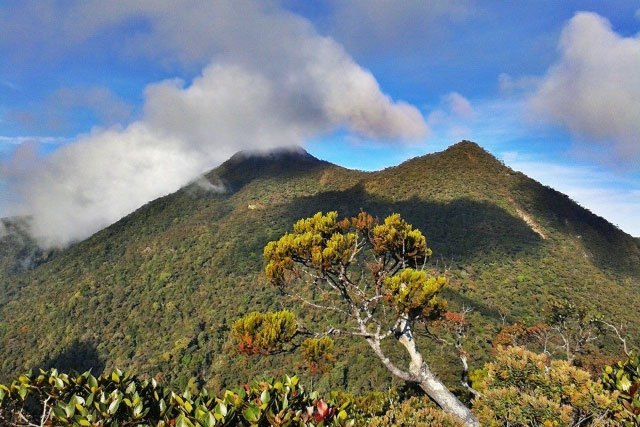
MOUNT TRUSMADI
Mount Trusmadi is located about 70 kilometres southeast of Kota Kinabalu City; its forest reserve covers an area of 184,527 hectares bordering four districts – Ranau up north, Tambunan on the west, Keningau down south and Sook in the east. Standing at 2, 642 meters (8, 668 feet) tall, Mount Trus Madi is the second highest mountain in Sabah and Malaysia after Mount Kinabalu. However, it is said to offer a tougher challenge to its climbers compared to Mount Kinabalu.
-
TRAILS
There are three trails (Wayaan) that lead to the peak of Mount Trus Madi:
1.Wayaan Kaingaran (Tambunan)
About 4.9km from starting point to summit.
Accessible only by 4WD (from town to starting point)
Tambunan town to starting point is about 27km, around 2 hours and 30 minutes drive.
Starting point to rest house – 2km about 2 hours trekking.
Rest house to summit is about 2.9km (4hours trekking)
Limit to 20 pax daily.
2D1N trip
2.Wayaan Mastan (Keningau)
About 4.3km from starting point to summit.
Accessible only by 4WD
From Keningau town to starting point is about 76km, about 3- 4 hours drive.
Limit to 30 pax daily.
2D1N trip
3.Wayaan Mannan (Sinua, Sook)
11.3km from starting point to summit.
Good access road. From Keningau town to starting point, 103km drive, about 3 hours drive.
4D3N trip.
All reservations must be referred to the Director of Forestry Department for the approval. -
FURTHER CONTACT
Sabah Forestry department
VISIT WEBSITE
ONLINE BOOKING
REVIEWS
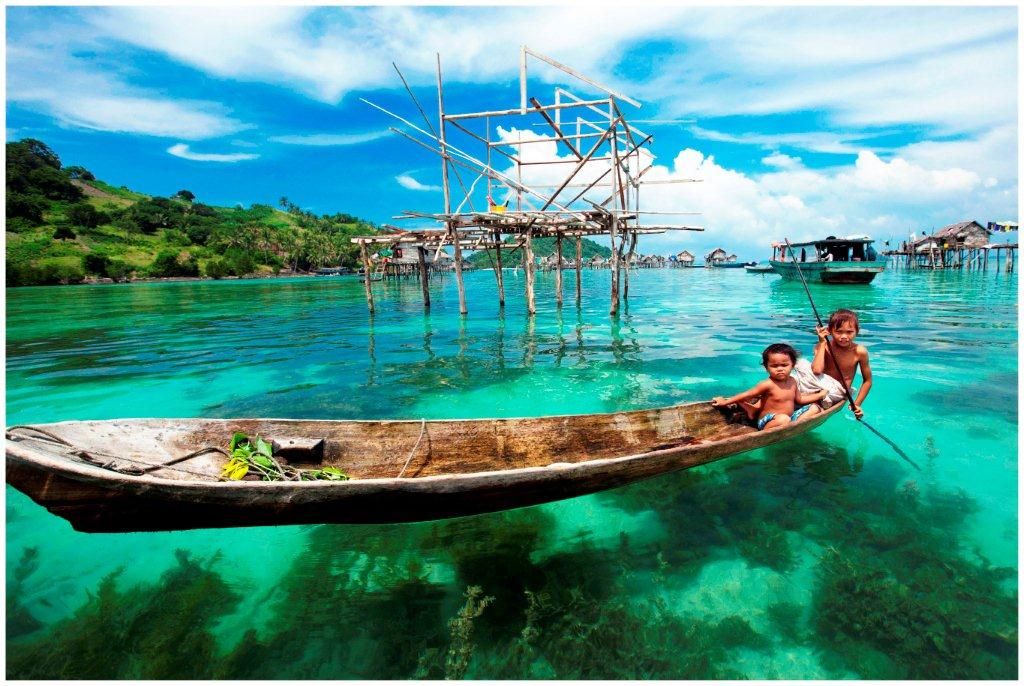
BODGAYA ISLAND
Pulau Bodgaya, Pulau Bohey Dulang and Pulau Tetagan together form a semi-circular group of islands marking part of the rim of a large, ancient volcanic crater. Approximately 8km long and 1.5km wide, Bodgaya Island covers an area of ~796.4 hectares, making it the largest of the 8 islands in Tun Sakaran Marine Park. There are no coral sand beaches here, as there are on nearby islands. Beaches on Pulau Bodgaya are formed mainly from cobbles of volcanic rocks believed to be of late Tertiary (Pliocene) and Quaternary origin (up to 2.58 million years ago). There’s an abundance of flora and fauna in the sheltered slopes and valleys of the island, where the richest vegetation and tallest trees in the area may be found. A number of freshwater streams flow along its northern end.
-
Things to do
Visitors to Bodgaya Island usually stop by as part of a longer trip to nearby Pulau Bohey Dulang, one of the most popular destinations in Tun Sakaran Marine Park.
1.Snorkeling & scuba diving
2.Bajau Laut (Sea Gypsies) village
Most visitors to the island come to catch a glimpse of the Bajau Laut settlements set amidst the majestic backdrop of the mountainous Bodgaya and Bohey Dulang islands. -
Getting here
Pulau Bodgaya is located about ±15 minutes by boat from Bum Bum, ±35 minutes from Semporna, ±20 minutes from Pom Pom, ±30 minutes from Mataking and ±1.5 hours from Mabul.
VISIT WEBSITE
HOTELS BOOKING
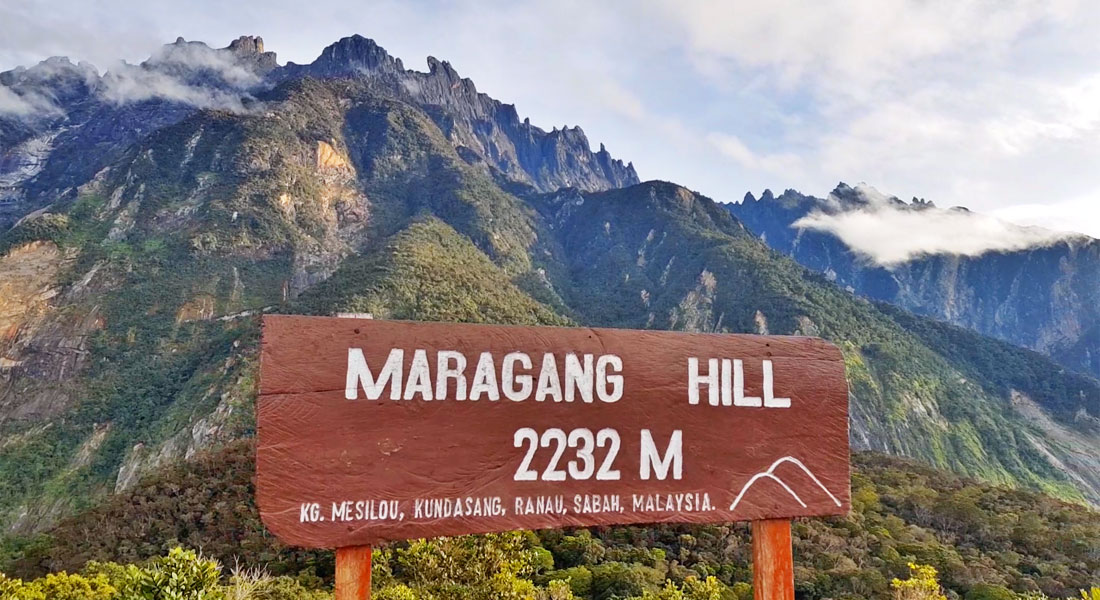
MARAGANG HILL
Maragang Hill is known for the stunning panaromic view at the peak. With an altitude of 2,233m above sea level, it is about four-kilometres hike. Best part of reaching the peak is that scenic view of Mount Kinabalu!
-
Programmes and activities
Hiking, Camping, Sightseeing
-
Facilities
Toilet, Camping site, Transport service, Information centre
-
Getting There
It’s about 96.2km from Kota Kinabalu or about 2 hours 10 minutes drive. You can opt for a Mini Bus or Taxi from Merdeka Field Bus Station at Jalan Padang, Kota Kinabalu. The scheduled departure time will be from 7.00am until 5.00pm with an estimated fare ranging from RM15.00 for minibus and RM150 per taxi. Upon reaching Kundasang town, find a private taxi to get to Mesilou Village which cost approximately RM5.
VISIT WEBSITE
FACEBOOK PAGE
ONLINE BOOKING
FOR MORE INFORMATON
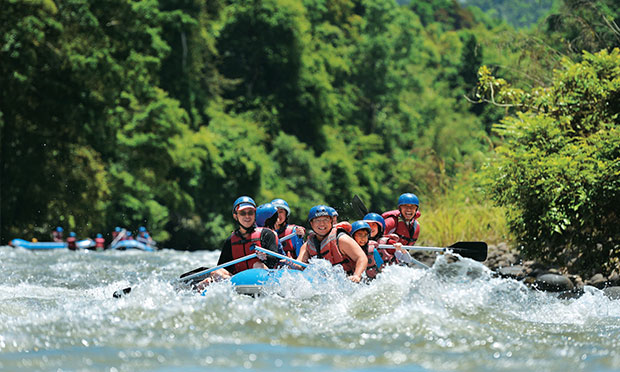
KIULU RAFTING
Let your adrenaline levels soar during a white-water rafting experience in Kota Kinabalu—considered one of the best places for rafting in Southeast Asia. No previous rafting experience is required to enjoy this adventure, which involves tackling Class III for a mildly exhilarating experience. The Kiulu River white water rafting is a trip that suits those seeking a moderately adventurous and relaxing trip.The furthest rafting distance is 15 kilometers when the water level is high, and 7 kilometers of excursions at normal water level. The grade is between 1 to 2.
-
ABOUT TRIP
Trip begins with a safety briefing session conducted by our professional raft guide that will demonstrates rafting techniques and proper handling of rafting equipment before rafting commences. Excursion covers up to 15km, making it the longest white water rafting trip in Borneo, It may covers 7km on medium water level. The journey will take about 1½ to 2 hours of rafting before reaching the ending point where delicious barbecue lunch prepared just by the riverbank.
-
GUEST POLICY
Padas River
Suitable for those aged 12 years old and above
Kiulu River
Suitable for those aged 3 years old and above -
What To Bring
Strapped sandal/sport shoes
Short and Tshirt
Swimwear
Insect repellent
Sunscreen
Changes of clothes
Towel
Cap/Hat -
OPERATING HOURS
Everyday 8am to 4pm
ADDRESS:
89250 Tamparuli, Sabah, Malaysia
VISIT WEBSITE
FACEBOOK PAGE
ONLINE BOOKING
REVIEWS
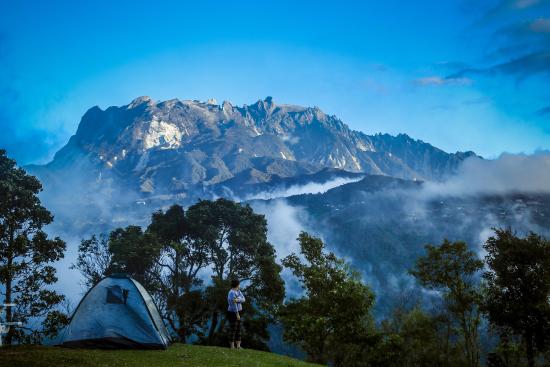
HOUNON RIDGE
Sabah has many nice vacation places that are unknown to most people. In this information era, you only need to “unlock” them by using meaningful search words.Hounon Ridge (Full Name: Hounon Ridge Farmstay and Camping) is located in Bundu Tuhan, which is 21 KM away from Kinabalu Park. Hounon means foggy in Dusun language.Hounon Ridge is a great choice for family and group of friends who want to escape the heat in city and enjoy some cooling temperature.The onsite facilities are complete with common kitchen, toilet and bathroom (hot shower), BBQ pit (advanced booking required), cafeteria, and picnic tables.
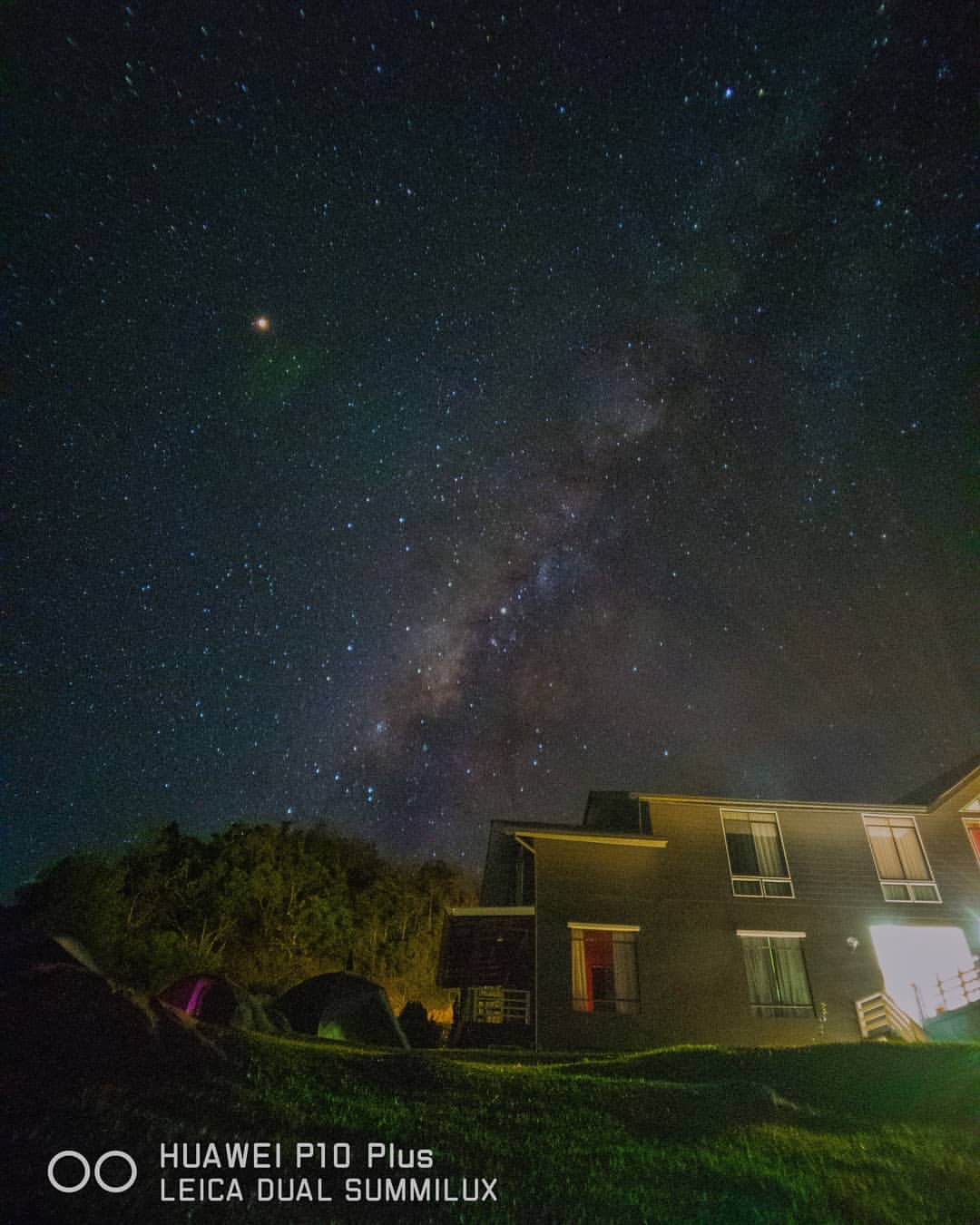
-
Accommodation & Fees
The camping fee is MYR20 per night. You also can book a room with them:
Dormitory Bed: MYR35/night
Room (with attached private bathroom): MYR100 – MYR250 per room (rates vary depend on room size and peak season) -
CAUTION
Hounon Ridge Farmstay is located at Kampung Himbaan Bundu Tuhan, 36 minutes drive from Kundasang town. The road heading to Bundu Tuhan is very steep and narrow. There's no street light and driving at night can be hazardous if you are not familiar with the road condition. Be particularly alert when driving and watch out for cows, chickens and stray dogs on the side of the road.
-
HOW TO GET THERE
On the main road from Kota Kinabalu city to Kinabalu Park, about 3KM before Kinabalu Park you will see a junction with blue road signage labeled “Bundu Tuhan” at your right (see Street Map). Turn into that junction and drive about 8 KM on a narrow countryside road, you will reach Hounon Ridge in 20 minutes.
-
OPERATING HOURS
Monday-Saturday 8am to 5pm
Sunday 10am to 5pm
ADDRESS:
Kg. Himbaan, Bundu Tuhan,, 89308 Ranau, Sabah, Malaysia
VISIT WEBSITE
FACEBOOK PAGE
REVIEWS
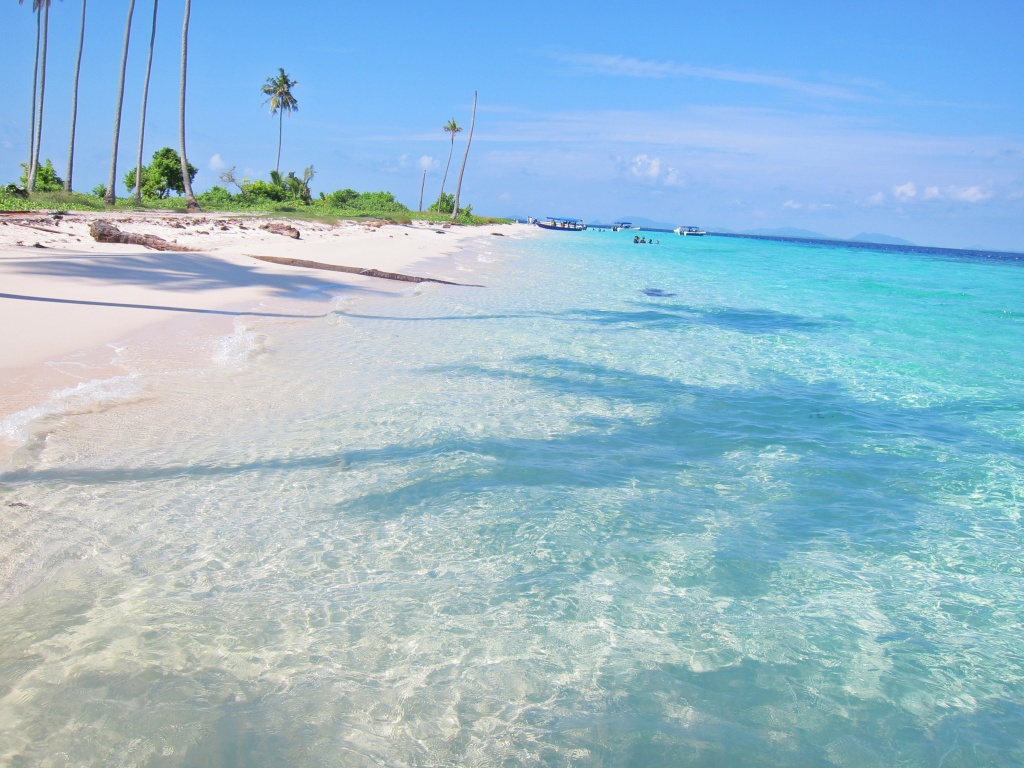
PULAU SIBUAN
Famed for its beauty even before Sipadan was discovered, Pulau Sibuan is a tear-shaped sand cay situated about 30 minutes from Semporna. Sibuan Island (Local Name: Pulau Sibuan) is also known as Battleship Island (军舰岛 in Chinese) because of its long and narrow shape. Its “bow” is the long strip of white sandy beach pointing to the north, and the dense trees behind looks like the bridge of a ship. Covering an area of approximately 15.13 hectares (0.15 square Kilometre), Sibuan is a sand cays island built entirely from the eroded remains of coral reef. Located next to Church Reef, it is known as one of the most picturesque islands in Tun Sakaran Marine Park, due to its largely untouched conditions. Whether you choose to come here for snorkeling, diving or a picnic, you’ll find that Sibuan Island is truly hard to beat as far as beauty and underwater splendor is concerned.
-
THINGS TO DO
Snorkeling & scuba diving
Pulau Sibuan’s crystal clear waters are a sight for sore eyes in any beachgoer’s book, making it truly a snorkeling haven that is second to none. Several dive operators organize their PADI Open Water diving courses here, including Scuba Junkie and Sipadan Scuba.
Lunch picnics
The large sandbank over here is a favourite spot for lunchtime picnics. Bajau Laut (Sea Gypsies) village There is a small, friendly community of Bajau Laut living in and around Pulau Sibuan.Sea Bajau are naturally born with a special ability because they have a body part bigger than ours (Want to guess what it is?). They can free dive up to a depth of 200 feet and hold their breath for 13 minutes. They are sea people for centuries, so their spleen evolved to be 50% bigger, to supply more oxygen. They are becoming a mermaid! -
GETTING THERE
To visit Sibuan Island, first fly to Kuala Lumpur or Kota Kinabalu city (capital of Malaysia and Sabah State respectively), then take a direct flight from these cities to Tawau City in East Coast of Sabah by AirAsia or Malaysia Airlines. Then get a taxi from Tawau airport to go to Semporna town, which takes about an hour. From Semporna town, the boat to Sibuan Island takes around 30 minutes.Sibuan is located ±30 minutes by boat from Semporna, ±25 minutes from Pom Pom, ±35 minutes from Mataking and ±1.5 hours from Mabul.
-
TIPS
At the opposite end of the island is a military outpost that protects the tourists. No photo taking is allowed there. And flying drone is prohibited on Sibuan (and many islands in Semporna).Be informed that other than a small and smelly toilet in the center of Sibuan, there is no restaurant and other amenities in Sibuan. Bring your food and water if you want to spend long hours on this island (usually travel agent will prepare for you).
VISIT WEBSITE
ONLINE BOOKING
FOR MORE INFORMATION CLICK HERE
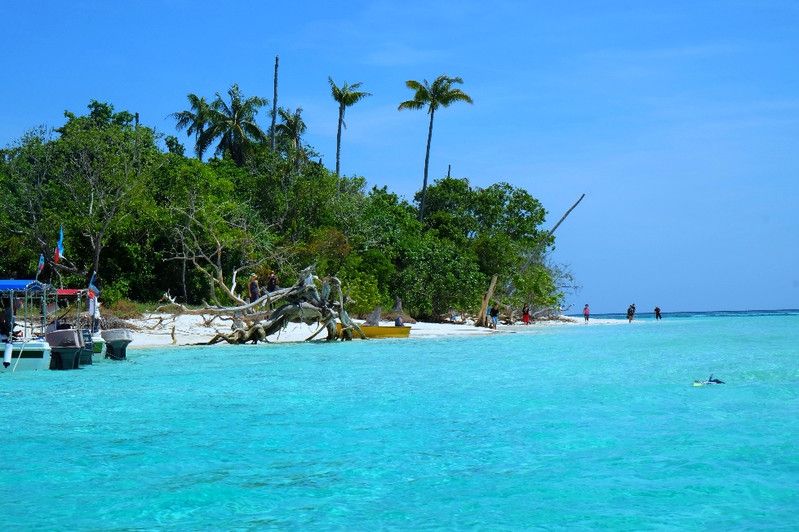
MANTABUAN ISLAND
Mantabuan Island is the smallest island in Tun Sakaran Marine Park, with an area of ~10 hectares or 0.1km². It is located just ±2km from the northern coasts of Bohey Dulang and Bodgaya, the biggest island in the marine park.Mantabuan is a volcanically formed and mostly submerged island that is paradise for divers who want to see magnificent coral and with unsurpassed visibility. It is also one of the best islands in the area for manta rays, and devil rays can often be found in the blue as well. The Black Coral Garden, this rare and precious coral can be found in just 22 meter of waters. In addition to the black coral, pristine soft coral and large table coral can be found throughout the entirety of the island. Huge coral boulders in the shallow provide shelter to a large number of marine lives, including myriad nudibranches, painted lobster, blue-spotted ribbon rays, and thousand upon thousand of reef fish. Dive sites further to the north and west of the island on the other hand are great to look for turtles, barracudas and a wide variety of smaller critters. Pulau Mantabuan is inhabited by a small, friendly community of Sea Gypsies (Bajau Laut), who live in houseboats or stilt houses built over coral reefs. Over here, it is not uncommon for visitors to be invited into their homes for a fresh coconut or two. The Malaysian army operates a military base on the island, and if you’re lucky, you may get the chance to snap a photo inside the army outpost that comes complete with artillery and sandbags. There are no motor vehicles or fancy commercial developments here, and visitors to the island are far and few in between.
-
THINGS TO DO
Snorkeling & scuba diving
Pulau Mantabuan is a hot spot for snorkeling and diving activities. Featuring 3 major dive sites, Black Coral Garden, Stingray Alley Way and Star Point, Mantabuan is best known for sighting groups of manta rays, eagle rays and devil rays, especially when the currents pick up. Other marine life commonly found in the area include sea turtles, blue-spotted stingrays, crocodile fish, puffer fish and the rare black coral.
Bajau Laut (Sea Gypsies) village
There is a small, friendly community of Bajau Laut living in and around Pulau Sibuan.Sea Bajau are naturally born with a special ability because they have a body part bigger than ours (Want to guess what it is?). They can free dive up to a depth of 200 feet and hold their breath for 13 minutes. They are sea people for centuries, so their spleen evolved to be 50% bigger, to supply more oxygen. They are becoming a mermaid! -
GETTING THERE
Mantabuan is located about ±35 minutes by boat from Semporna, ±20 minutes from Pom Pom, ±30 minutes from Mataking and ±1.5 hours from Mabul.
VISIT WEBSITE
ONLINE BOOKING
FOR MORE INFORMATION CLICK HERE
AMAZING BORNEO TOURS WEBSITE
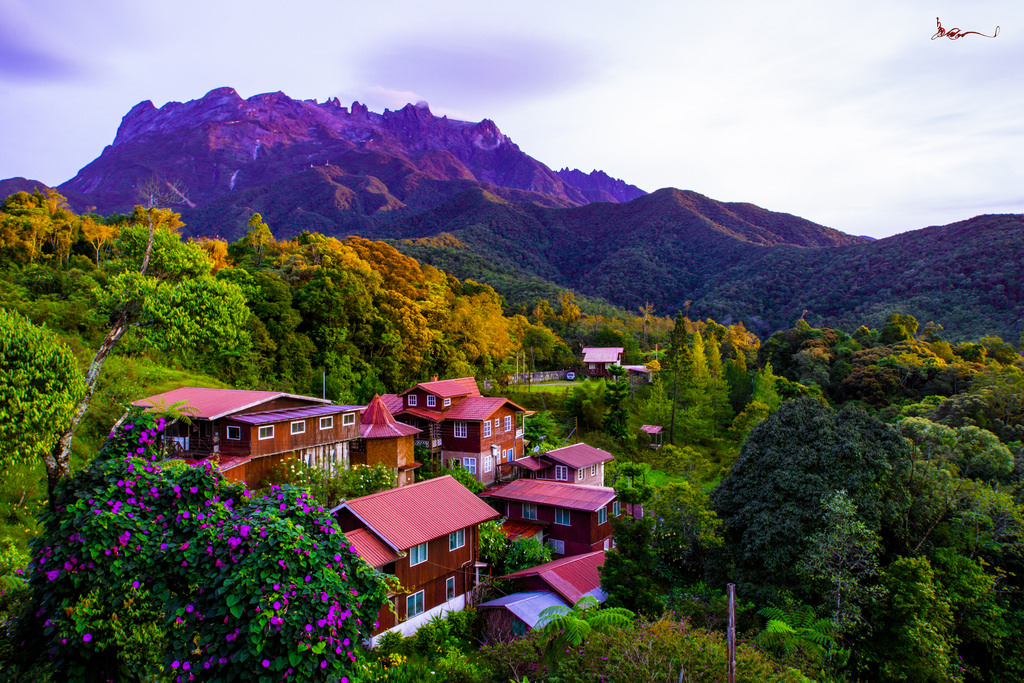
KUNDASANG
Kundasang is a town in the district of Ranau in Sabah, Malaysia that lies along the bank of Kundasang Valley. It is located about 6 kilometres away from Kinabalu National Park, 12 kilometres from Ranau town and is renowned for its vegetable market which is open seven days a week. It is the closest town to Mount Kinabalu and has a panoramic view of the Mountain. It is populated mainly by the native Dusun and a small population of Chinese people. Almost all the shops are operated by locals. At an elevation of almost 1,900m (6,200ft), it is the highest settlement in Malaysia.
-
GET IN
Kundasang is located on the main road between Kota Kinabalu (~100km) and Ranau, 6km after the Mt Kinabalu Park entrance.
SELF DRIVESelf-drive is easy from Kota Kinabalu with a mostly decent bitumen road and adequate sign posting. It does become mountainous and windy on approach but also very scenic. The journey from KK is about 90-100km and takes approximately 2 hours depending on how confident you are overtaking very slow trucks doing 20 km/hr. Exercise patience and caution as locals do overtake on blind corners, over double lines, and occasionally with on coming traffic.
BY BUSBuses from Kota Kinabalu or Ranau are available.
BY TAXILong range taxis from Kota Kinabalu or Ranau are another option.
-
THINGS TO DO
DESA CATTLE FIRMwhere you can see real dairy cows and try its products. It has amazing vistas. Accecible by car, taxi, hitchhicking or walking 5 km (most of them going up) from kundasang. Entrace fee 5 RM.
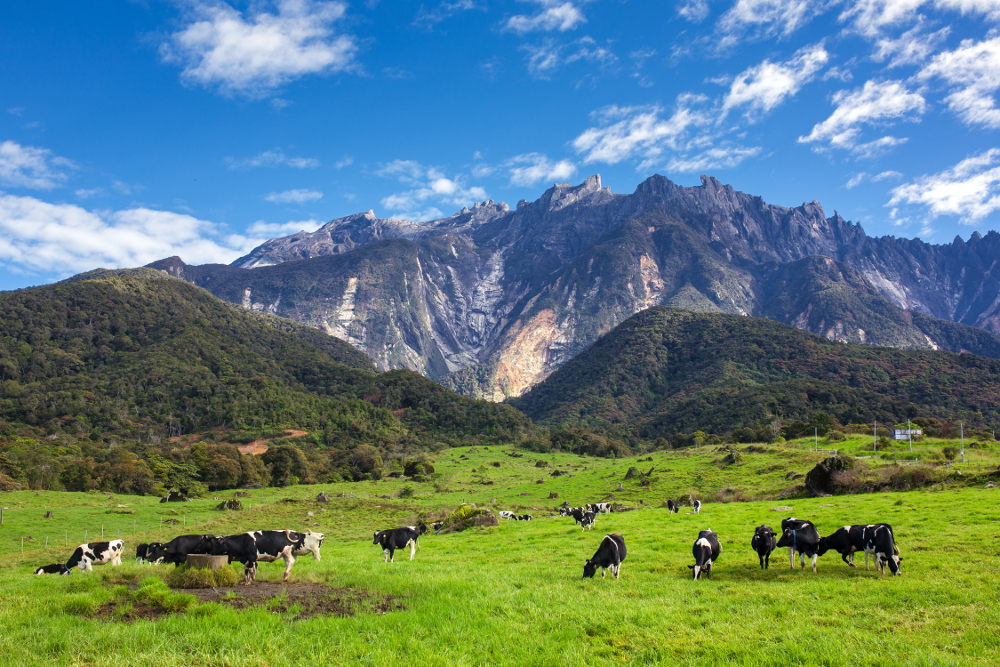
These lush green hills overlooking a dairy farm is not the New Zealand outback; this is Desa Dairy Farm in Kundasang, Sabah.
SABAH TEA GARDEN
SOSODIKON HILL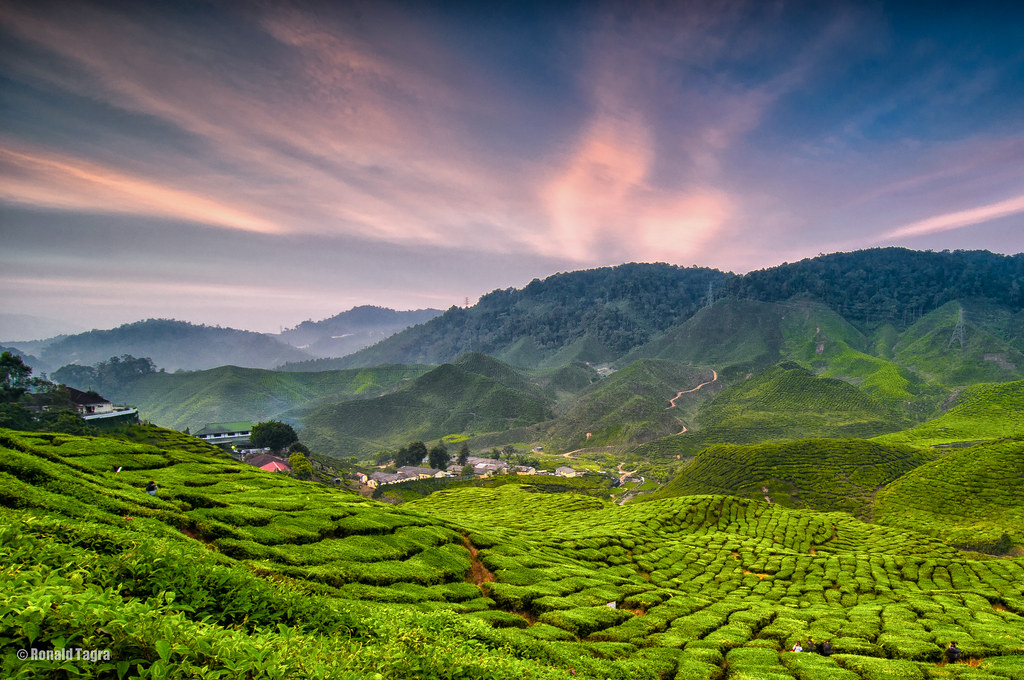 Whether you’re a tea person or not, you will appreciate a trip to the sprawling tea plantation in the cool mountain air. Take a tour at the Tea Factory at an additional fee to watch how tea is processed. For the adventurous, trek along the trails to the peak of Kamunsu Hill in the early hours to catch a magnificent view of sunrise or embark on a night walk to check out unique insect species.
Whether you’re a tea person or not, you will appreciate a trip to the sprawling tea plantation in the cool mountain air. Take a tour at the Tea Factory at an additional fee to watch how tea is processed. For the adventurous, trek along the trails to the peak of Kamunsu Hill in the early hours to catch a magnificent view of sunrise or embark on a night walk to check out unique insect species.Sosodikon Hill is better to follow the navigation charter. The local guide is most familiar with the road conditions. It is suitable for in-depth tours and those who are deeply interested in plants. The gifts of nature here are very rich and it is worth paying.
Address: Kg Kauluan Peti Surat 873, 89308 Kundasang, Sabah, Malaysia
VISIT FACEBOOK PAGE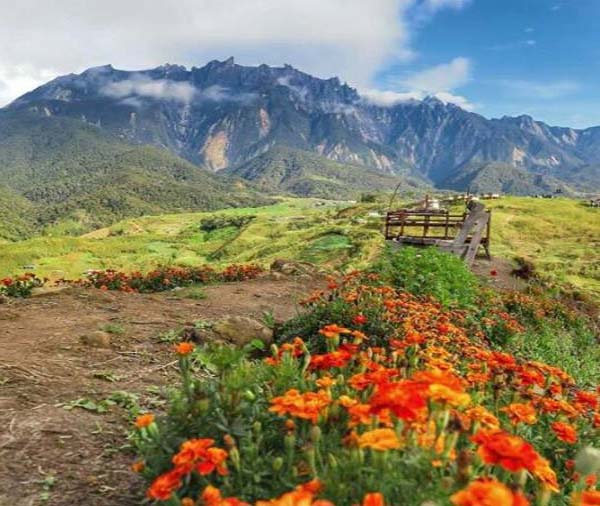
-
fresh market of Kundasang
Once a quiet village, the now small town of Kundasang is home to independent traders selling produce harvested from the farmland nearby. Visitors will not miss the Kundasang fresh market, a stretch of stalls along the Kundasang-Ranau highway.
Tandem Paragliding RanauTo compulsive thrill seekers, the sky is the limit. With nothing between you and the sky, Tandem Paragliding Ranau gives you the wings to fly like a wild bird. Fee: RM190 (Malaysian), RM250 (non-Malaysian)
Operation Hours: 10am to 5.30pm
VISIT WEBSITE